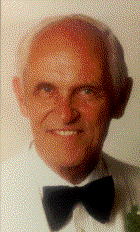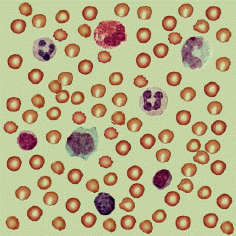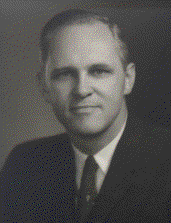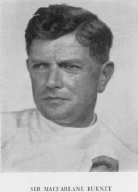Summary
Evaluation of high achievement forms part of an evaluation continuum operating
throughout the scientific enterprise. Correct evaluation of individuals and their work
means that the best work is published and the most able individuals obtain research grants
and awards. It is important that evaluations be carried out fairly and objectively. This
paper considers evaluations of the roles of Ehrlich, Jerne, Talmage, and Burnet in the
conception and development of the clonal selection theory, which revolutionized our
understanding of body defences against foreign organisms. These evaluations show varying
degrees of bias; in particular, the major role of Ehrlich tends to be overlooked.
Contradicting the conventional wisdom, the objective record shows that Talmage, not
Burnet, first conceived clonal selection. The error-proneness of evaluation in science
suggests that our evaluation processes should be redesigned to take this into account. |
Note added in proof of the published paper: Further information on Jerne's
role is provided by an article entitled "Darwinian overtones: Niels K. Jerne and
the origin of the selection theory of antibody formation" by Thomas Soderqvist
(1994, J Hist Biol 27, 481-529). [Here reference #17]
References
1. Burnet, F. M. (1957) A modification of Jerne’s theory of antibody
production using the concept of clonal selection. Australian
Journal of Science 20, 67-69.
2. Burnet, F. M. (1959) The Clonal Selection
Theory of Acquired Immunity. Cambridge University Press, Cambridge.
3. Burnet, F. M. (1968) Changing Patterns, an
Atypical Autobiography. W. Heinemann, Melbourne, Australia.
4. Ada, G. L. (1989) The conception and birth of Burnet’s clonal selection
theory. In Immunology 1930-1980: Essays on the History of Immunology. Edited by
Mazumdar, P. H., pp. 34-44, Wall and Thomson, Toronto.
5. Sexton, C. (1991) The Seeds of Time. The
Life of Sir Macfarlane Burnet. Oxford University Press, Melbourne,
Australia.
6. Silverstein, A. M. (1989) A History of
Immunology. Academic Press, San Diego.
7. Cruse, J. M. and Lewis, R. E. (1994) David W. Talmage and the advent of the
cell selection theory of antibody synthesis. Journal of
Immunology 153, 919-924.
8. Forsdyke, D. R. (1995) Jerne and positive selection. Immunology Today 16, 105.
9. Forsdyke, D. R. (1968) The liquid scintillation counter as an analogy for the
distinction between self and not-self in immunological systems. The Lancet 1, 281-283.
10. Forsdyke, D. R. (1993) On giraffes and peer review. FASEB Journal 7, 619-621.
11. Ehrlich, P. (1900) On immunity with special reference to cell life. Proceedings of the Royal Society of London 66,
424-448.
12. Ehrlich, P. (1906) Collected Studies on
Immunity. J. Wiley & Sons, London.
13. Jerne, N. K. (1955) The natural selection theory of antibody formation. Proceedings of the National Academy of Science, USA.
41, 849-857.
14. Talmage, D. W. (1957) Allergy and immunology. Annual
Reviews of Medicine 8, 239-256.
15. Cohn, M. (1994) The wisdom of hindsight. Annual
Reviews of Immunology 12, 1-62
16. Jerne, N. K. (1966) The natural selection theory of antibody formation: ten
years later. In Phage and the Origins of Molecular
Biology. Edited by Cairns, J., Stent, G. S. and Watson, J. D., pp.
301-312, Cold Spring Harbor Laboratory Press, New York.
17. Soderqvist, T. (1994) Darwinian overtones: Niels K. Jerne and the origin of
the selection theory of antibody formation. Journal of
the History of Biology 27, 481- 529.[This
was a "Note added to proof" in the formally published version: see
also: Science As Autobiography: The Troubled Life of Niels Jerne
by Thomas Soderqvist, (2003)
Yale Univ. Press.]
18. Witebsky, E. (1954) Ehrlich’s side-chain theory in the light of present
immunology. Annals of the New York Academy of Science
59, 168-181.
19. Putnam, F. W. and Udin, B. (1953) Proteins in multiple myeloma. A
physiochemical study of serum proteins. Journal of Biological
Chemistry 202, 727-743.
20. Burnet, F. M. (1967) The impact of ideas on immunology. Cold Spring Harbor Symposium on Quantitative Biology
32, 1-8.
21. Burnet, F. M. (1956) Enzyme, Antigen, and
Virus: A Study of Macromolecular Pattern in Action. Cambridge
University Press, Cambridge.
22. Forsdyke, D. R. (1989) A systems analyst asks about AIDS research funding. The Lancet 2, 1382-1384.
23. Forsdyke, D. R. (1993) Bicameral grant review: how a systems analyst with
AIDS would reform research funding. Accountability in
Research 2, 237-241.
24. Forsdyke, D. R. (1994) A theoretical basis for accepting undergraduate
academic record as a predictor of success in a research career. Implications for the
validity of peer review. Accountability in Research
3, 269-274.
|
End note
(circa 2000)
This
paper was published in February 1995. Later in that year David Talmage was awarded the
Sandoz (now Novartis) prize for basic immunology at the Ninth International Congress of
Immunology in San Francisco.
However, there is life after Immunology! In 1998 David Talmage and Richard
Sanderson published a paper in
Physics Essays
(11, 53-59) entitled: "On the Unification of Gravity and
Inertia". |
 |
|
End note
(Sept 2010)
Thomas Soderqvist's paper was published
in the autumn of 1994 and came to my attention when this paper was at
the proof stage, so it could not be added to the published list of
references
(added here as ref. 17). In 2003 a revised and abridged translation of
Soderqvist's 1998 Danish biography of Jerne was published and I added it to the
list (ref. 17). However, I did not get round to reading the book until
September 2010. Some facts emerged that cast new light both on the
issues raised in my above 1995 article, and in my work on positive
selection of lymphocyte repertoires discussed elsewhere in these
webpages
Click Here.
We learn that Jerne's scientific background
was in serology - studying with much mathematical elegence the
titre of antibodies in immune sera for purposes of
standardization. He worked in the Standardization Department of the
Danish State Serum Institute (from which he was called upon to advise
WHO on international standards). Here, he was able to prepare his
doctoral thesis under ideal circumstances. As he himself stated:
I just picked up the phone in Serum Institute and said, 'I
want twenty sterilized plates with agar and twenty mice and a
rabbit and so forth, this afternoon at two o'clock,' and
everything was there. |
This is a situation many
research students would envy. In the course of his experiments Jerne serendipidously discovered a serum activity
that could have been an antibody that had pre-existed prior to the organism's
encounter with antigen - already dubbed "natural antibody" in
the literature. This led to the idea that an incoming antigen might
encounter a wide spectrum of pre-existing antibodies. Jerne had high
expertise in the phenomenon of antibody avidity, so knew that a large
number of antibodies of variable avidity would suffice to recognize the
potentially infinite spectrum of foreign antigens (Ehrlich's dilemma).
Among the natural antibodies one might bind an antigen better than
others. The antigen would select that antibody and take it to a cell
where, somehow, more of the same kind of antibody would be synthesized.
The natural antibody population would, somehow, have been randomly
generated, not co-opted from some other function (e.g. nutrition) as had
been suggested by Ehrlich. Furthermore, Jerne speculated that the
randomization might be on-going and might occur in the thymus.
Apart from
translations of Ehrlich's above mentioned papers (refs. 11 & 12), in 1957
The Collected Works of Paul Ehrlich
became available. Ehrlich wrote (1897):
To attribute what could be called
inventive activity to the body or to it cells, enabling them to
produce new groups of atoms as required, would involve a return
to the concepts current in the days of natural philosophy. Our
knowledge of cell function and especially of synthetic processes
would lead us rather to assume that in the formation of
antibodies, we are dealing with the enhancement of a normal cell
function, and not with the creation at need of new groups of
atoms. Physiological analogues of the group of the specifically
combining antibodies must exist beforehand in the organism or in
its cells. |
Being fluent in
German, Jerne could have read the Ehrlich originals prior to 1955.
In his 1994 paper Soderqvist makes clear that Jerne did
indeed know of Ehrlich's side chain theory. In the biography it is
stated that in an early
draft of his 1955 natural selection theory paper Jerne had actually
discussed Ehrlich's side chain theory, but had omitted this discussion from the final
version. Jerne conceded that he might have been unconsciously influenced
by his prior reading of Ehrlich's papers but, as far as he was aware, the
key idea came out of the blue one day when walking near Knippel Bridge.
Soderqvist suggested that Jerne "wanted to be unique, that he opted for
originality rather than displaying his connectedness with tradition."
The idea was completely new to Jerne and greatly excited him.
Jerne wanted to
claim it as his own. But he did not take it any further. It is possible that others
who had come across natural antibodies in their work had thought of, but dismissed, the
natural selection idea
because, as Cohn pointed out (above), protein directly begetting protein (more
antibody) was inconsistent with genetics and
molecular biology. If a cell could somehow "read" a protein and turn
that information into nucleic acid, it might work, because nucleic acid
can beget nucleic acid, and that nucleic acid can then beget more of the
protein. But no mechanism for directly "reading" a protein into nucleic
acid was known then, or has since emerged (i.e. this so-called central
dogma of Crick has stood the test of time).
The fact that Jerne did
know of, and had studied, Ehrlich's work is surprising, because it now seems such a short
step to go from the selection of antibodies to the selection of cells.
Jerne did not take that step. But, as indicated in my above article, others
were already toying with the idea. It was in the air. Indeed, Soderqvist tells us that a
few months after publication of the natural selection theory paper a
young colleague, Jørgen Spärck, had suggested that cells
were the selection unit, but Jerne "was evasive and did not accept it."
I am here
reminded of William Bateson and chromosomes (see the Cock-Forsdyke
biography, 2008). Bateson and Saunders had discovered that certain
Mendelian characters were inherited with each other more frequently than
chance would allow (i.e. the characters were in what we came to call a linkage group). And at
a meeting in New York in 1902 Bateson had noted that the factors
responsible for the Mendelian characters (now referred to as genes) were
likely strung along chromosomes. Yet he did not take the further step to
suggest that characters were linked because they belonged to the same
chromosome. One explanation for this is that, with minimal funding, he
was totally occupied in combating a well-funded establishment ("the
biometricians") that was ferociously attacking
Mendel's work. First things first. Linkage was then a minor detail.
In Jerne's case, other
scientists were not a distraction, there were plentiful funds, and
clonal selection was not a minor detail. Soderqvist portrays a man of
high talent who, in his early years, wandered aimlessly. Lost in
philosophical speculation he also had, to put it mildly, a distracting
private life. However, it seems that he was well placed to jolt Burnet
out of his Lamarckist line of thought to
embrace clonal selection. For this, for his seeing a way through
Ehrlich's dilemma, and for pointing out the need for some randomization
process by which different antibody specificities would be generated, we remain in Jerne's debt.
For more on this
Click Here.
|
Next for:
Genes and Antibodies, 1959
(Click Here)
Go to: Theoretical Immunology Index.
(Click Here)
Go to: Videolectures page (Click Here)
Go to: Homepage (Click Here)
This page was established circa 1998 and last edited on
17 Jan 2018 by Donald Forsdyke



